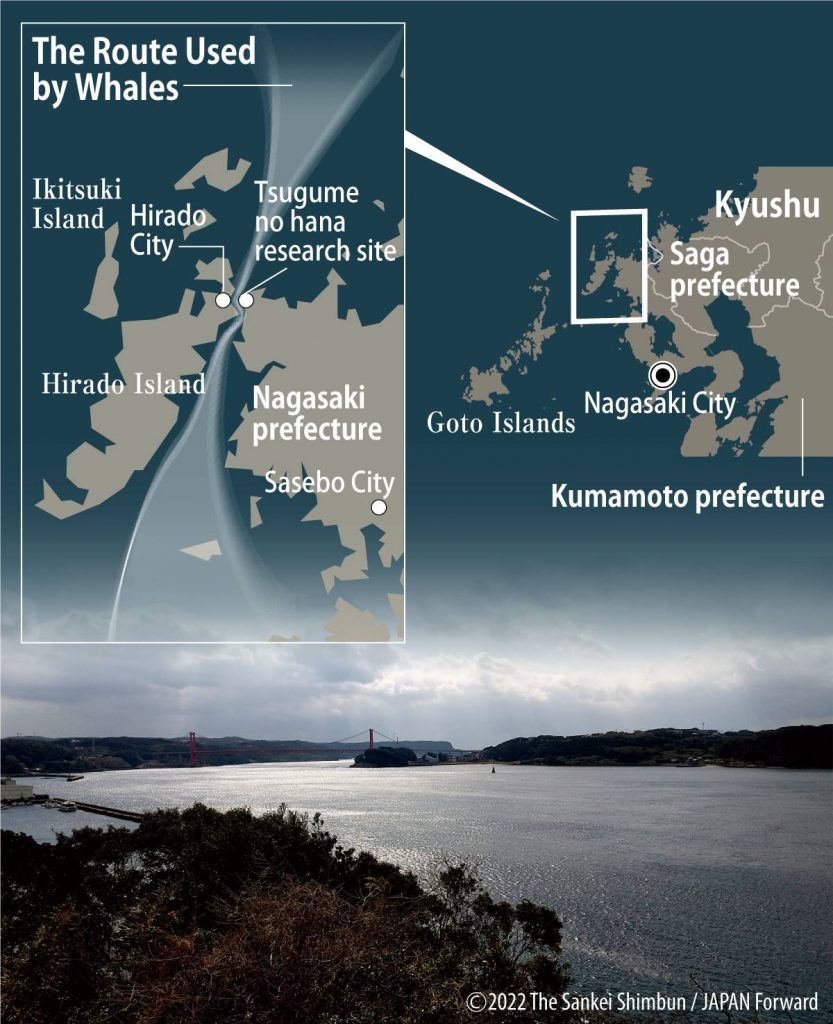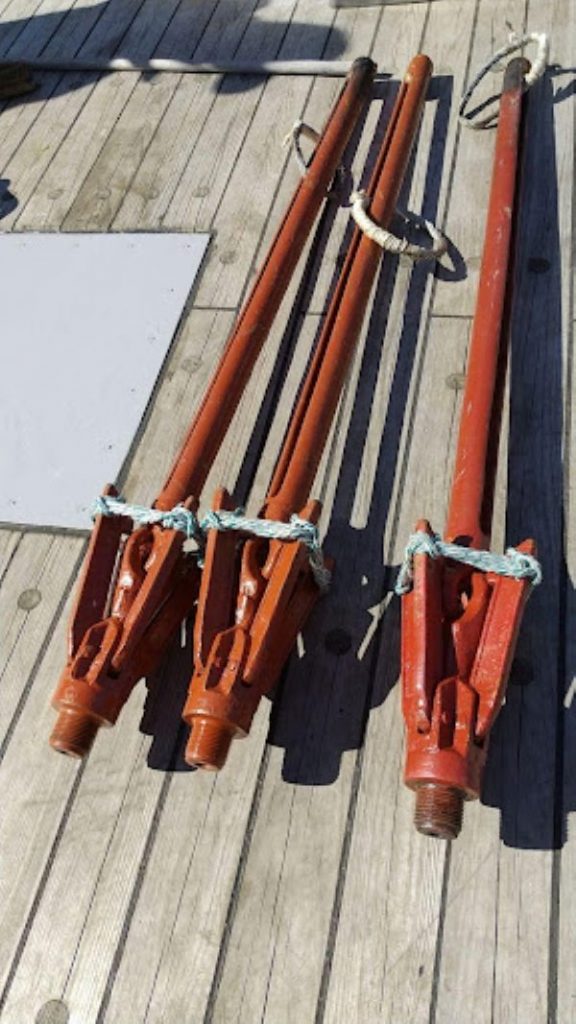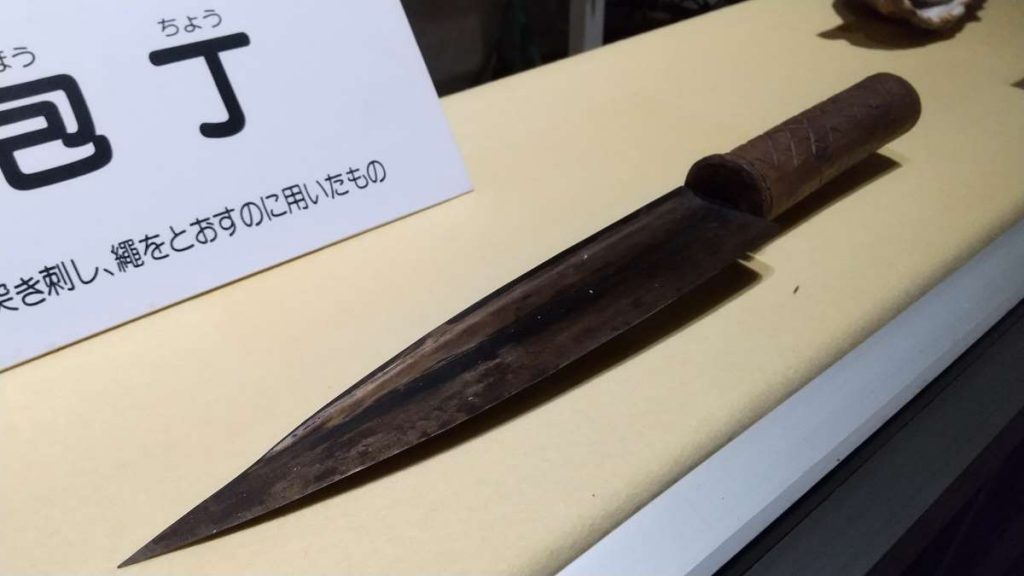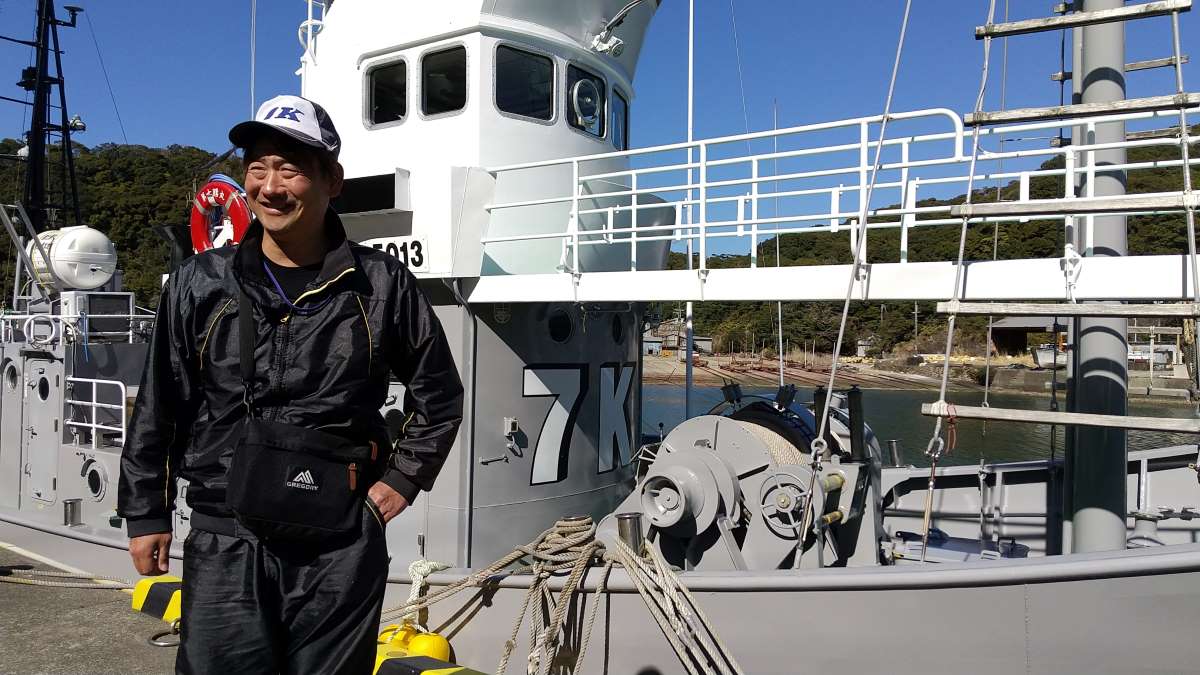Third in a series of five articles
Part 1: Whales in the Japanese Landscape: Natural Resources and Root of Manufacturing
Part 2: Whales in the Japanese Landscape: The Power of the Warrior Spirit
The Japanese have been hunting whales since ancient times. It is impossible to consider the relationship between the Japanese people and the sea without examining the history of whaling.
This is the third of a series of five articles on “Whales in the Japanese Landscape.” The series is part of a larger ongoing collection published by the Sankei Shimbun in Japanese, titled “Tales of the Watatsumi” after the Japanese god of the sea.
In this part we take a look at how whaling tests the character of each whaler, and at betting honor on the thrust of a knife.

In traditional Japanese whaling, whales were hunted by human power alone. When the time came to finish a hunt, the final cut was performed by young whalers who clung to the back of the animals at sea. It was a grueling test that was compulsory to become full-fledged whalers. The young men leaped into the sea, risking their lives.
Whaling remains a test of skill and character today, even as mechanical power prevails.
Among the variety of boats moored in the harbor of the town of Taiji, Wakayama Prefecture, one in particular caught my attention. It had a cannon mounted on its bow, and a high mast topped with a watchtower.
This boat is the 32-ton Katsumaru No. 7, a small whaling ship owned by the Taiji Fisheries Association. Taiji’s whaling tradition, which began in the Edo period, is still active today.
Takashi Takeuchi, the 43-year-old captain, standing on the deck of his ship, has agreed to an interview. Three harpoons were lying on the deck, each about a meter long and painted red. They were so heavy that it was difficult to lift them.
Before Modern Methods Arrived
“We aim for the whale’s heart with the harpoon,” says Captain Takeuchi. “We shoot them in the soft belly area, so the harpoon passes through to the other side of the body.”
Modern mechanized whaling overwhelmingly favors humans over whales. The Norwegian method, in which a harpoon with a rope attached is fired with a cannon, was introduced in the Meiji period (1868-1912). This quickly vanquished the Japanese traditional method of whaling, which relied on the sheer force of human numbers.
When a steel harpoon hits a whale in the heart, the whale dies instantly. “The intention is also to prevent the whale from suffering,” says Takeuchi.
In the past, whales met a difficult end. They were harpooned by hand dozens of times and died in agony, spewing blood from their spouts. Whalers could only fight the giant creatures by gradually weakening them.

Battling with Numbers
Neither humans nor whales can choose the era in which they are born.
In the Edo period there were no diesel engines or cannons, and men hunted whales wearing only loincloths. They rowed wooden boats with oars, and their only weapons were hand-thrown harpoons and knives.
A frighteningly sharp knife is on display at the Whale Museum in the town of Taiji. The blade is used for a task called hanakiri (“rhinotomy”) or nose cutting.
Harpooning a whale involved hundreds of men who systematically pursued and repeatedly harpooned the giant creature. And when it finally weakened, it would be time to use this tool. They would cut a hole through the meat of the blowhole, or nose of the whale, through which a rope could then be threaded.
It was a task to be carried out while the whale was still on the ocean and still alive, not on land. If the whale died and sank under the water, all of the work in the hunt would be lost.
This task was extremely important in Japanese traditional whaling because it kept the whale from sinking and helped with transporting it back to land.
On the Hunt
“Go!”
At the order of the commander of a boat, called a hazashi, a man would jump into the sea, which was soaked with the blood of the weakened whale. He would grip the dull end of a knife in his mouth.
According to the book Japanese Traditional Whaling by Gorosaku Taiji (Kodansha publishing, 2021, in Japanese), the cutting of the nose was an essential task for young men who wanted to become hazashi.
Once the young whaler swam to the whale, he would climb up onto its slippery back. He would haul himself up using the embedded harpoons and nets tangled on the animal. When the whale would dive, he would also be submerged.
The whales, however, would not dive deeper than their own body length. The young whaler would wait for the creature to pause in the water, and then use the knife.

The job was so dangerous for those who tried it that “when done poorly, they would be killed by the whale.” Only those with both skill and character were allowed to attempt it.
For Prestige
The further back in time we go, the more the balance of power tilts toward animals.
Our ancestors, who descended from the trees to the ground and began to walk on two legs, were the targets of predators. Perhaps it was the skill and character of humans that changed them from being the hunted to being the hunter.
Whale hunting seems to have been practiced in Japan as far back as 4000 BC, predating the industrialization of traditional whaling by many long years.
Hundreds of stone harpoons made of sanukite, a naturally hard black rock, have been excavated at the Tsugume no Hana archeological site in Hirado City, Nagasaki Prefecture. The Hirado-Seto Strait between the Kyushu mainland and Hirado Island was once a migration route for whales. It is possible that the Jomon people of this time harpooned whales from their log boats, hunting the animals that passed through in certain seasons.
Hunting large animals, which was both dangerous and unreliable, was not economically viable, says archaeologist Hitoshi Watanabe in his book Jomon-Style Stratified Society (Rokko Publishing, 1990, in Japanese). So what was the purpose of the Jomon-period whaling?
Watanabe believes that large animals, such as bears on land and whales in the sea, were hunted for the prestige they brought to the hunters. It was a spiritual reward that could not be measured by economics.
6,000 Years Later
Humans are still chasing whales 6,000 years later. The power of humans now overwhelms the strength of the animals. But what about the human mind?
“Smart whales defy expectations. If you predict they’ll surface over here and aim the harpoon, they may come up in a completely different place over there,” says Takeuchi, the captain of the Katsumaru.
During the modern whaling season from spring to fall, whalers leave in the morning from ports close to the hunting grounds, such as those off Hokkaido in the north and Sanriku in Northeast Japan, and return at night. They search for whales from high up on a windswept mast exposed to the elements.
Sometimes they search for 12 hours, losing all feeling in their limbs, and find nothing. The range of the cannon is 45 meters. At sea, you have to get right up to the target, right beside the whale. The boat must be positioned to intersect with the whale’s side in a “T” shape, or it will not be able to fire off a good shot.
Even if a whale is spotted, it will swim away if the boat approaches too suddenly. If it dives, it is no longer visible. The whalers do not know when the whale will surface. They navigate their boat while guessing the direction and distance to where the whale will appear again.
“You either catch a whale or you don’t. It’s all or nothing. There’s a world of difference between the two. Unlike fish, there is no in-between number for whales.”
The skill and character of whalers are still being tested today.
(Read the column in Japanese at this link. This article is published in cooperation with the Institute of Cetacean Research. Let us hear your thoughts in our comments section.)
Series continues in Part 4.
RELATED:
- Whales in the Japanese Landscape: Natural Resources and Root of Manufacturing
- In Chiba Prefecture’s Minamiboso, Fighting to Save Coastal Whaling Traditions
Author: Hideaki Sakamoto

